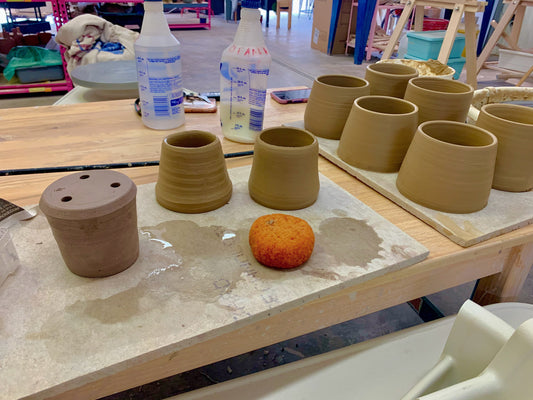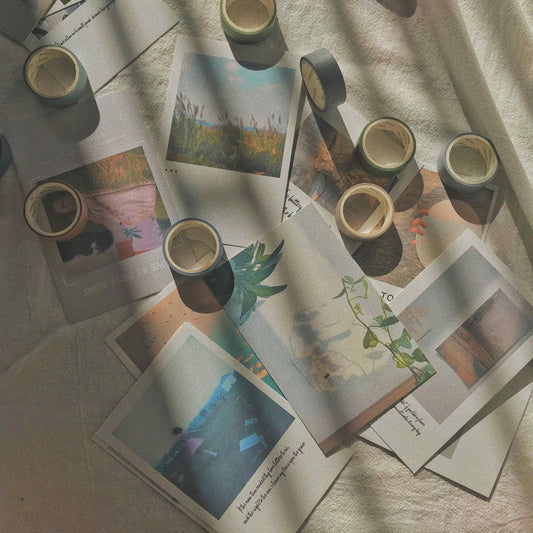For everyday vessels, ceramic is a more sustainable material than plastic, but more durable than wood and paper. It is a safe non-toxic material (fully glazed). Most smaller handmade local ceramics require way less waste and usage on water and energy, and emit much less CO2 into the air.
Ceramics uses all natural materials:
Ceramics made from clay (a mixture of silica, carbon, nitrogen, etc.) which is found worldwide. Technically speaking, I can go into my backyard and start digging and filtering to obtain clay. Although this would take much efforts of finding the right amount / consistency of clay. Here's an interesting article about processing backyard clay.
The process of ceramics uses less waste:
Throwing/sculpting/greenware stage:
Ceramics have been in human history dating back to 24,000 B.C. The clay can usually be reclaimed and made into another pot (if it has never been fired). The clay used, trimmed off, or discarded during the making process can be
Firing process:
With bigger size of kilns used these days, energy can be efficiently used to fire large amount of ceramics at a time.
"Handmade potteries requires less energy during its firing process to make them. Unlike mass-produced potteries which requires an enormous production assembly line in which a large amount of energy is utilized during it firing process. This energy is usually sourced from the combustion of fossil fuel which is not eco-friendly." -- Aukuras
After the ceramics reaches its end of life:
"Ceramics are made from clay, and when they eventually get broken down into particles, they do not harm the environment. It would take a while for ceramics to get to this point, but they do not release any toxic gas into the atmosphere when they do." --Conserve Energy Future
After glaze firing, ceramics are quite sturdy and they don't break easily. Of course, they can still chip, shatter, or crack. In those instances, people have made mosaics or terrazzo with the broken pieces.
Overall, ceramics is a much more sustainable median for our day-to-day usage, from cups, plates, bowls, to dish soap, earrings, vases. It is also a very versatile material to work with.




